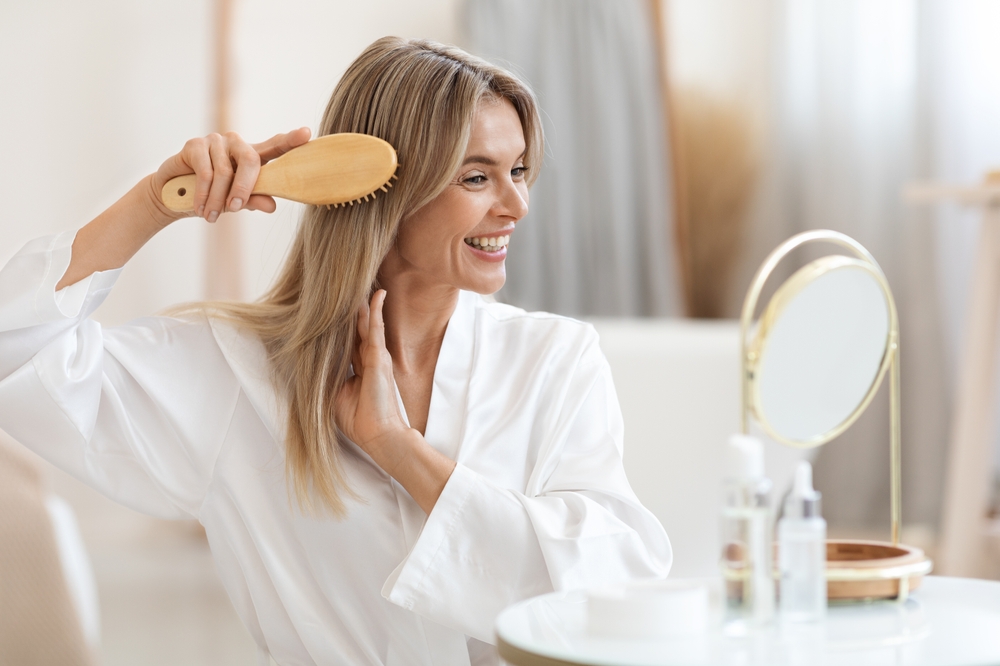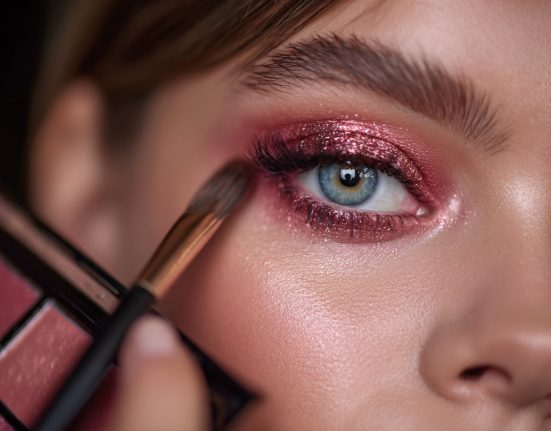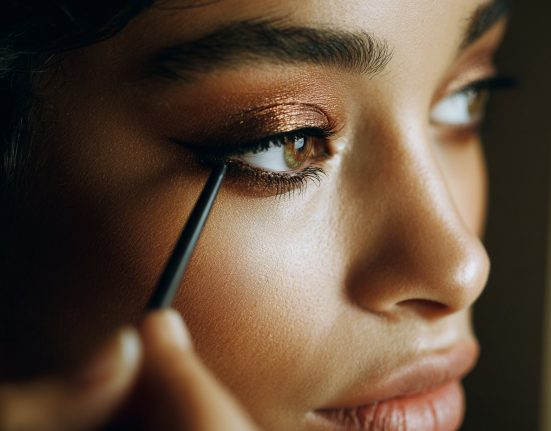That hair starts thinning, and losing its lustre as time goes by is inevitable. But all that means is that it’s time to switch up your mane routine. There’s lots you can do and use to keep your strands looking just how you want them to for the foreseeable future. Experts tell you just how to do this.
The cause
Any change in your strands and scalp doesn’t happen overnight but starts in your 40s or even late 30s. “As women enter their 40s, their menopausal phase begins. The oestrogen and progesterone levels decrease in the body, causing hair thinning. This may result in scalp visibility and female pattern hair loss. Besides hormonal changes – nutritional, environmental, and lifestyle changes contribute to this. Your follicles, which produce melanin, start to slow down and become lighter, leading to greying that begins at your temple and slowly extends to your crown. In addition, hair thickness decreases, and the oil-producing glands in your scalp reduce their activity, leading to a scalp that feels dry and strands that frizz,” explains trichologist and senior consultant at JCB Salons Pvt Ltd., Dr. Kavita Rohilla. The biggest culprits you can blame are your hormones and genetics, agrees Dr. B L Jangid, dermatologist & hair transplant surgeon, SkinQure Clinic. “By 40, you may notice 40-50% of hair loss. In addition, you could develop conditions like thyroid, diabetes, or hypertension that cause hair loss or changes,” he adds.
The early signs
So how does one go about maintaining thick, full hair after 40? “You can have thicker, fuller hair in your 40s. But if there is permanent damage, it becomes difficult to revive your hair completely,” cautions Rohilla. Jangid advises paying attention to any lifestyle disease and halting it right in its tracks to control hair loss and improve the longevity of your hair. “If you start noticing that you’re losing more than 100 strands a day, consult a dermatologist. Another issue is that if the cause is hormonal, the medication prescribed by a physician is often a long-term solution. Many people tend to stop having this after just a couple of months, which won’t solve the problem,” he says.
What you can do
Rohilla advises starting with a well-balanced diet consisting of biotin in the form of carrots, peanuts, spinach and guava; Vitamin C from citrus fruits, bell peppers, and berries; Vitamin E from avocados, sunflower seeds, pumpkin seeds, almonds, and walnuts; Iron and zinc from beef, lentils, oats, spinach, raisin, and figs, and Omega 3 fatty acids from salmon, flax seeds, and canola oil. As for supplements, she recommends biotin, amino acids, vitamin B1, B2, B3, B6, B12, folic acid, iron, zinc, vitamin C, E and D3, and Omega 3 Fatty Acids. “Get weekly hair masks to moisturise the scalp and hair. Internal hydration and sound sleep are other factors you shouldn’t ignore. Apart from this, air dry hair or use cold air while blow drying to avoid excessive drying of the hair shaft, and use lukewarm or cold water post applying conditioner,” she says. Avoid over-shampooing your hair; two to three times a week is enough for most people, and stay away from sulphates and parabens. Jangid suggests being mindful of what ingredients can benefit you. “For instance, if your hair fall is due to iron deficiency, applying an oil rich in iron will not help. Instead, you need an iron tablet, which will circulate through the blood and improve the levels in the body,” he explains. Pick non-ammonia, natural colours that won’t dry out your scalp and keep a gap between your appointments to let your scalp breathe well.
Oil’s the way
Never underestimate the benefits of a good head massage. With the scalp being one of the most fertile areas of the skin, keeping it rejuvenated is key. “Most people only focus on the hair and neglect the scalp. A healthy scalp is the root of healthy hair. Cleansing, exfoliating and nourishing your scalp can work wonders to improve micro blood circulation, stimulate hair growth and aid in the even distribution of natural hair oils,” says Rohilla. Jangid believes massaging your scalp with a little oil can help. “This can be done once a week, but avoid keeping the oil on overnight. Since the scalp already has oil glands, keeping it on too long or applying too much might increase dandruff and can deteriorate your scalp’s health,” he says.








